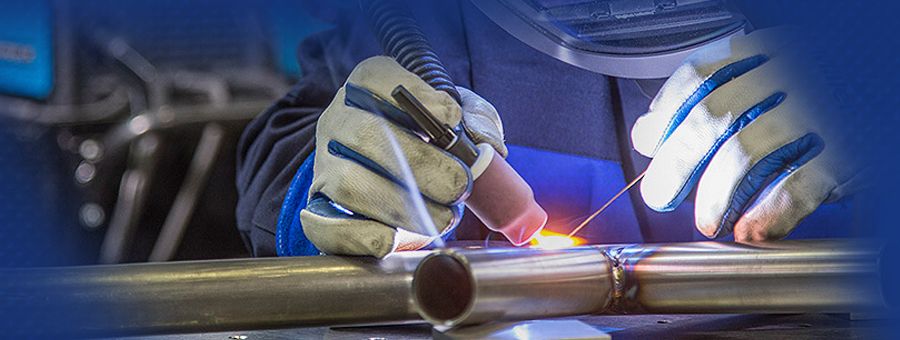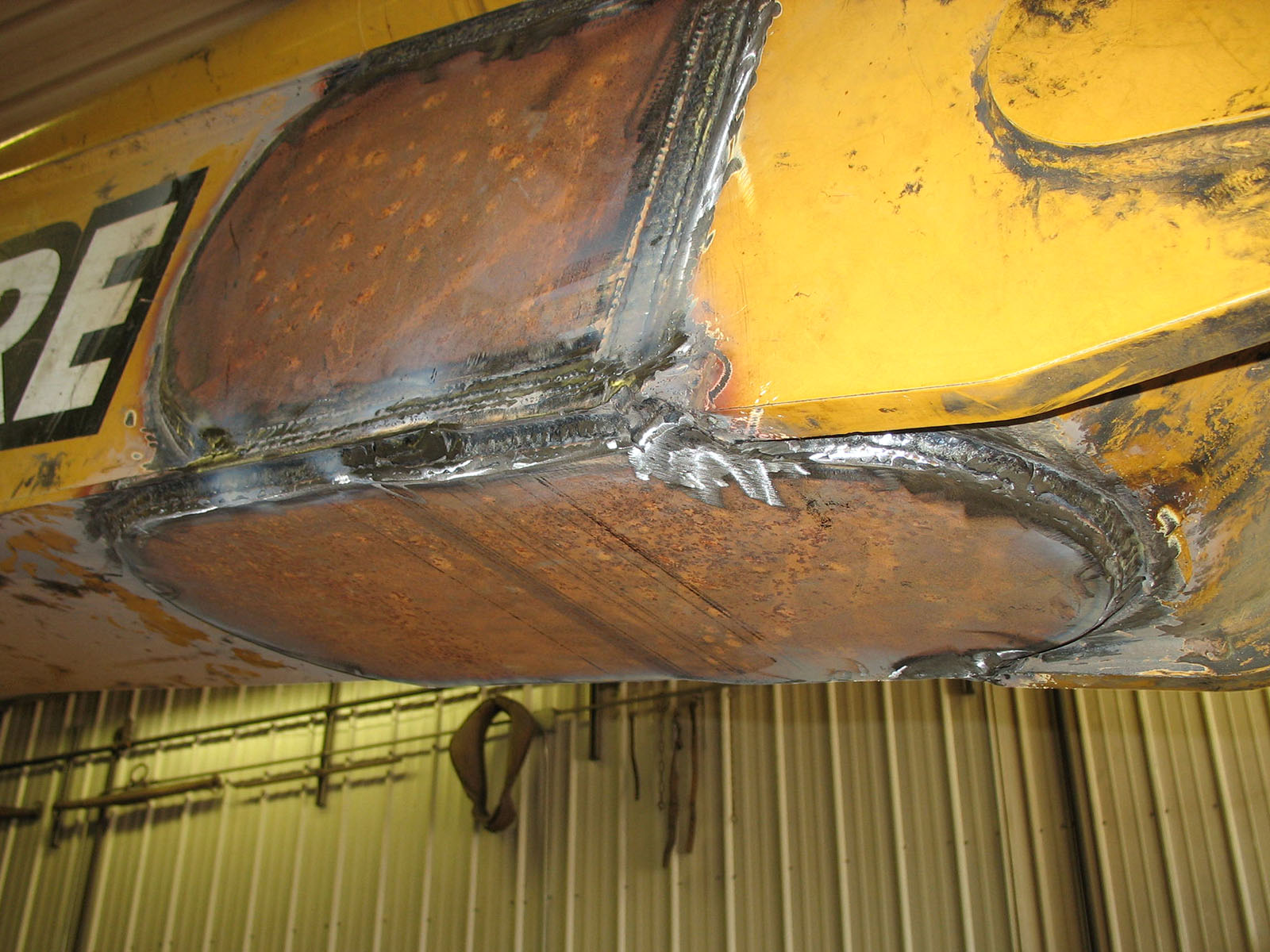Common Welding Fixing Issues and Just How to Address Them Properly
Welding repair services commonly come across a variety of problems that can threaten the honesty of the end product. Typical issues consist of poor infiltration, porosity, and imbalance, to name a few. Each flaw offers one-of-a-kind difficulties that require particular approaches for resolution. Understanding these concerns is vital for welders intending to improve their results and abilities. This discussion will certainly check out these common welding repair work issues and efficient techniques to resolve them.
Insufficient Infiltration
Inadequate infiltration occurs when the weld metal falls short to completely fuse with the base material, leading to weak joints and potential architectural failings. This concern usually comes from inadequate heat input, incorrect electrode angle, or improper welding speed. Welders might come across insufficient infiltration because of a mistake of the required parameters for a specific product thickness or type. Additionally, contamination on the base material's surface can prevent effective bonding, intensifying the trouble. To attend to insufficient infiltration, welders must assure suitable setups on their devices and maintain a tidy job surface area. Regular examination of welds is recommended to identify any shortages early, enabling for prompt adjustments and the prevention of jeopardized structural stability in welded settings up.
Porosity
Porosity is an usual problem in welded joints that shows up as little gas bubbles caught within the weld metal. This defect can compromise the stability of the weld, resulting in decreased toughness and prospective failing under stress. Belgrade. Porosity normally emerges from contamination, dampness, or improper welding strategies, which allow gases to get away into the liquified weld pool. To attend to porosity, welders need to assure correct surface area prep work, keep a clean workplace, and make use of ideal welding specifications. In addition, choosing the right filler material and securing gas can reduce gas entrapment. Routine evaluation and testing of welds can aid identify porosity early, guaranteeing timely rehabilitative actions are taken, thereby preserving the high quality and reliability of the welded framework
Imbalance
Misalignment in welding can emerge from numerous elements, including incorrect setup and thermal expansion. Recognizing the source is vital for reliable resolution. Several improvement strategies are offered to straighten components and assure architectural stability.
Causes of Misalignment
Welding misalignment often originates from a range of underlying concerns that can endanger architectural honesty. One main reason is improper fit-up of components before welding, which can cause voids and uneven surfaces. Variations in thermal growth during the welding procedure can additionally lead to distortion, especially if the materials being signed up with have different coefficients of growth. In addition, inadequate clamping and fixturing may fall short to hold components securely in position, resulting in motion throughout welding. Improperly kept devices, consisting of welding makers and tools, may present variances in the weld bead, additional adding to misalignment. Ultimately, operator mistake, stemming from inadequate training or experience, can likewise play a substantial function in producing misaligned welds.
Adjustment Techniques Available
Attending to misalignment effectively requires a combination of restorative techniques customized to the specific issues handy. One typical technique is using components or jigs to hold components in the correct setting during welding, guaranteeing consistent alignment. Furthermore, preheating the materials can help in reducing distortion and boost fit-up. For substantial misalignment, mechanical realignment strategies, such as utilizing hydraulic jacks or clamps, can be employed to remedy the placement prior to welding. Post-weld heat therapy may likewise be necessary to relieve tensions brought on by imbalance. Ultimately, careful examination and adjustment throughout the configuration stage can stop misalignment concerns from becoming substantial issues, advertising a smoother welding process and enhancing overall architectural honesty.
Distortion
Distortion is a typical challenge in welding that can occur from different elements, consisting of uneven cooling and heating. Comprehending the sources of distortion is essential for implementing reliable avoidance strategies. Resolving this concern not only improves structural honesty but likewise improves the general top quality of the weld.
Root causes of Distortion
When based on the intense warmth of welding, products frequently go through modifications that can lead to distortion. This sensation mostly emerges from thermal expansion and tightening throughout the welding process. As the weld location warms up, the material increases; upon air conditioning, it contracts, which can produce inner anxieties. Additionally, uneven home heating across a work surface can intensify these anxieties, causing bending or flexing. The kind of product likewise plays a considerable duty; steels with differing thermal conductivity and coefficients of expansion may react in a different way, causing unpredictable distortions. Additionally, inadequate joint layout and insufficient fixturing can add to imbalance during welding, visit the site increasing the probability of distortion. Understanding these causes is necessary for efficient welding fixing and avoidance methods.
Prevention Techniques
Efficient prevention techniques for distortion during welding emphasis on regulating heat input and making sure proper joint design. Preserving a regular heat input aids to lessen thermal growth and tightening, which can bring about distortion. Using strategies such as preheating the work surface can likewise lower the temperature gradient, advertising consistent heating. Additionally, selecting suitable joint styles, such as T-joints or lap joints, can boost security and reduce stress and anxiety focus. Applying proper fixturing to safeguard the work surfaces in position even more help in maintaining alignment throughout the welding procedure. Finally, staggered welding series can distribute warmth extra uniformly, stopping localized distortion. By applying these techniques, welders can significantly reduce the probability of distortion and improve the overall quality of their welds.
Breaking
Fracturing is an usual concern come across in welding repairs, commonly arising from numerous aspects such as inappropriate cooling rates, product option, or poor joint preparation. The incident of fractures can considerably compromise the integrity of the weld, resulting in potential failings during procedure. To address this concern, welders have to first assess the source, making sure that products are compatible and suitably selected for the details application. In addition, managing the cooling price during the welding procedure is essential; fast air conditioning can cause tension and bring about breaking. Proper joint style and preparation additionally add to lessening the threat. Executing these approaches can enhance weld quality and durability, inevitably decreasing the possibility of splitting in ended up weldments.

Insufficient Blend
A substantial problem in welding repair services is incomplete combination, which happens when the weld metal does not appropriately bond with the base material or previous weld passes - Montana Mobile Welding and Repair Welding. This problem can result in weaknesses in the joint, possibly endangering the integrity of the bonded structure. Elements adding to incomplete blend consist of not enough warm input, incorrect welding technique, and contamination of the surfaces being joined. To address this concern properly, welders ought to assure correct pre-weld cleaning and surface prep work, as well as change their welding specifications to attain ample penetration and fusion. Regular assessment during the welding process can likewise aid identify insufficient fusion early, permitting timely restorative procedures to enhance the total high quality of the weld
Overheating
While welding repair services can enhance architectural integrity, overheating offers a considerable difficulty that can result in material degradation. Extreme heat throughout welding can alter the mechanical buildings of metals, resulting in minimized toughness, raised brittleness, and warping. This phenomenon is specifically important in high-stress applications where architectural dependability is vital. Identifying getting too hot can entail visual inspections for discoloration or distortion, as well as monitoring temperature level during the welding procedure. To alleviate the risks linked with getting universal welding wire too hot, welders must use ideal techniques, such as regulating heat input, changing travel rate, and utilizing suitable filler products. Additionally, applying pre- and post-weld warm therapies can aid restore product residential properties and improve the overall high quality of the repair, making certain long-term efficiency and safety.
Frequently Asked Questions
What Are the Usual Indications of a Welding Problem?

Just How Can I Check My Welds for High quality?
To test welds for quality, one can utilize aesthetic evaluations, ultrasonic screening, and radiographic approaches. Each method guarantees architectural honesty, determines problems, and confirms adherence to specified criteria, inevitably improving the dependability of the welded joints.
What Safety Safety Measures Should I Take While Welding?
When welding, one must focus on security by wearing proper individual safety devices, ensuring correct air flow, securing combustible products away, maintaining a tidy work area, and understanding surroundings to prevent accidents and injuries.
Can I Repair a Weld Without Remodeling the Entire Joint?
Repairing a weld without renovating the entire joint is possible, depending upon the damage (Montana Mobile Welding and Repair Fabrication). Techniques such as grinding, including filler product, or using a welding procedure can efficiently deal with specific defects while protecting the surrounding structure
What Tools Are Important for Effective Welding Repair Works?
Crucial tools visit this page for reliable welding repair work consist of a welding device, wire brush, mill, protective equipment, clamps, and filler materials. Each tool plays an essential duty in making sure quality and security throughout the repair service procedure. Porosity normally develops from contamination, dampness, or improper welding techniques, which allow gases to get away into the liquified weld swimming pool. Improperly conserved equipment, consisting of welding makers and devices, may present inconsistencies in the weld grain, further adding to imbalance. When subjected to the extreme heat of welding, products commonly go through adjustments that can lead to distortion. Cracking is an usual concern come across in welding repairs, often resulting from numerous elements such as inappropriate cooling rates, product choice, or insufficient joint prep work. A substantial issue in welding fixings is insufficient fusion, which occurs when the weld metal does not sufficiently bond with the base product or previous weld passes.